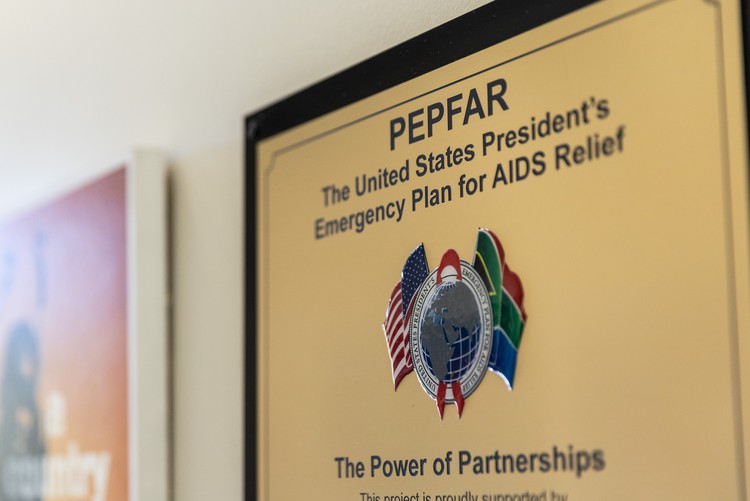Treasury hands HIV response a lifeline, but it’s probably too little
UNAIDS says US funding cuts put decades of progress against HIV in jeopardy
In 2024 the US President’s Emergency Plan for AIDS Relief (PEPFAR) provided about R7.5-billion in funding for health programmes in South Africa. Archive photo: Ashraf Hendricks
- Minister of Health Aaron Motsoaledi has announced that the National Treasury will be releasing R753-million to help cover the PEPFAR funding shortfall.
- This is only about a tenth of what the US government contributed last year.
- International donors have pledged an additional R200-million to medical research, to which the Treasury will also contribute R400-million over three years.
- UNAIDS on Thursday released its annual global update indicating that the US funding withdrawal could potentially undo decades of progress and lead to millions of additional HIV infections and AIDS-related deaths by 2030.
South Africa’s HIV response will receive a financial lifeline from the National Treasury and international donors, Health Minister Aaron Motsoaledi announced during a budget vote in Parliament on Wednesday.
After months of negotiations, Treasury has agreed to release about R753-million immediately to help cover the shortfall left by the US government’s funding withdrawal earlier this year.
This is only about a tenth of the R7.5-billion that the United States President’s Emergency Plan For AIDS Relief (PEPFAR) contributed to HIV programmes last year. But it is not straightforward calculating exactly how much US money has been withdrawn in 2025 from South Africa’s HIV programme. US money comes mainly through two institutions: USAID, which has been entirely cut as far as we understand, and the Centers for Disease Control and Prevention, which has not been cut.
Motsoaledi said the money from Treasury will be allocated to HIV services, medicines and research. About R590-million is to be allocated to provinces for the HIV component of the District Health Programme Grant.
A further R32-million is to be allocated towards the Central Chronic Medicine Dispensing and Distribution Programme, and R132-million to the South African Medical Research Council.
“These amounts are intended to cover the most urgent needs and further allocations may be considered later,” said the minister.
“It’s the responsibility of the government to provide for its people. There must be a very clear political will … How did we arrive here, where we all depend on one country?” said Motsoaledi.
Motsoaledi said that the budget vote announcement would pave the way to plug the gap left by funding withdrawals and to “eliminate” HIV as a “public health threat”.
In addition, the Bill and Melinda Gates Foundation and the Wellcome Trust have each pledged R100-million for medical research, on condition that each contribution is “matched” with R200-million from the National Treasury. Treasury has agreed to this, and will release R400-million over three years, Motsoaledi said.
UNAIDS
The sudden withdrawal of US funding from HIV programmes around the world could undo decades of progress. This is according to a UNAIDS report released on Thursday.
The report warns that recent cuts to PEPFAR threaten to destabilise HIV programmes in low- and middle-income countries, including South Africa.
The UNAIDS report shows that by the end of 2024, major strides were made worldwide, with the number of HIV infections and AIDS-related deaths having dropped to their lowest levels in more than 30 years.
However, the report warns that since the funding cuts earlier this year, “low- and middle-income countries have been rocked by sudden, major financial disruptions”, which “threaten to reverse years of progress in the response to HIV”.
UNAIDS estimates that if PEPFAR funding is permanently suspended, there could be more than four million additional AIDS-related deaths and six million new HIV infections by 2030.
At the UNAIDS report launch at Bertha Gxowa Hospital in Johannesburg on Thursday, Motsoaledi said the funding withdrawal was a “wake-up call”. He also said the recent announcement by the Global Fund to Fight AIDS, TB and Malaria to reduce its funding came as a shock.
Clinics closed
Since the withdrawal of PEPFAR funds, several clinics have closed down and healthcare workers have been retrenched. Civil society organisations and activists have urged the presidency and health minister to access emergency funding from Treasury.
In Parliament in May, the Global HIV Treatment Coalition presented to the Portfolio Committee on Health about the state of HIV programmes.
But Motsoaledi has downplayed the impact.
“I know that the withdrawal of PEPFAR funding made some people believe that our massive — actually the world’s biggest — HIV counselling, testing and treatment campaign has collapsed or is on the verge of collapsing,” Motsoaledi said in his budget vote.
“I have noticed with regret that in South Africa we seem to like the word ‘collapse’ … The public health system suffers this tag quite a lot. It is said to have collapsed so many times that I do not know how many lives it has. There is no way we are going to allow the world’s biggest HIV/AIDS Programme to collapse. Never,” Motsoaledi said.
Support independent journalism
Donate using Payfast

Don't miss out on the latest news
We respect your privacy, and promise we won't spam you.
Next: Lesotho declares unemployment a national disaster
Previous: Judge Mbenenge inquiry: Evidence leader accused of “malicious” cross-examination
© 2025 GroundUp. This article is licensed under a Creative Commons Attribution-NoDerivatives 4.0 International License.
You may republish this article, so long as you credit the authors and GroundUp, and do not change the text. Please include a link back to the original article.
We put an invisible pixel in the article so that we can count traffic to republishers. All analytics tools are solely on our servers. We do not give our logs to any third party. Logs are deleted after two weeks. We do not use any IP address identifying information except to count regional traffic. We are solely interested in counting hits, not tracking users. If you republish, please do not delete the invisible pixel.

